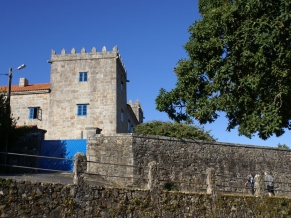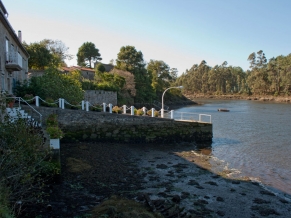- Home
- Experiences
- Places of interest
- Cereixo, a seaside spot
Cereixo, a seaside spot
Besides Sabadelle, Vimianzo has another seaside spot, Cereixo. This parish is located high up the peninsula formed at the junction of the Cereixo and Grande rivers, at the tip of the ria of Camariñas. According to the book “Terra de Soneira, no corazón da Costa da Morte” (Terra de Soneira, in the heart of Costa da Morte”), by Xosé Manuel Suárez Lema, Cereixo was Vimianzo’s strategic location both for trade and defence from the 10th century onwards, but was completely destroyed following the Viking and Arab raids targeting Terra de Soneira in the 12th and 13th centuries.
However, the Port of Cereixo recovered and remained highly important. Ships arrived there carrying pilgrims on their way to Santiago or Muxía, and later, during emigration periods, it was a departure point for people embarking for America.
Stone architecture
The palace of Torres de Cereixo, erected in the 17th century, is located in this small parish of just over 500 people. Visits are not allowed though. On the main façade there is a coat of arms representing the stately homes of feudal lords Novoa, Bermúdez, Castro, Soutomaior, Mendoza and Vilamarín.
Right next to it there is the Church of Santiago de Cereixo (12th century). Its south portal features St. James’s seven disciples carrying his mortal remains on a boat, the only such representation in Galician Romanesque art, and one of only four in Spanish Romanesque art.
A centennial oak, witness to many historical events, stands guard over the church.
It is indeed a beautiful landscape of sea and land whose charm is enhanced by the stone houses with balconies, a huge 30 feet long hórreo (typical Galician granary) and its tidal mills (17th century). These mills, built on the mouth of the ria of Camariñas, took advantage of the rise of the ria’s waters, accumulating them, so that when the tide fell, there would be enough water to grind the grain. A real example of marine engineering.


